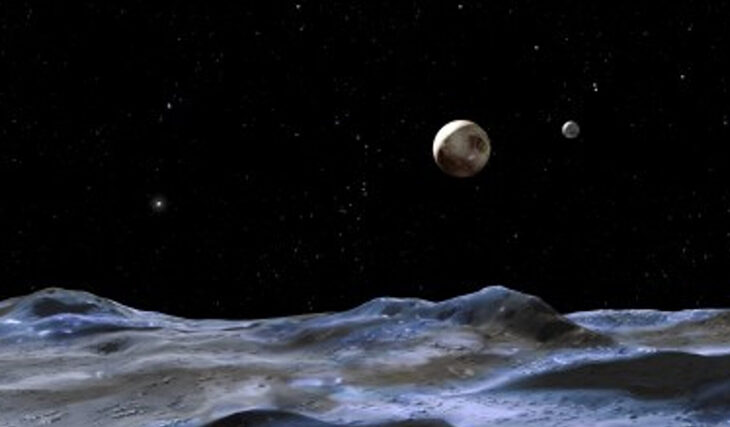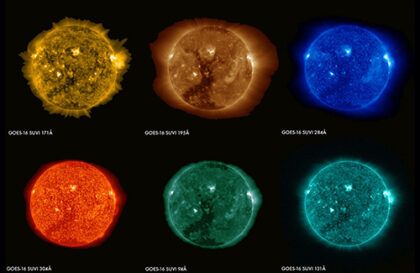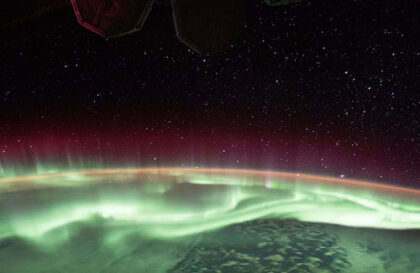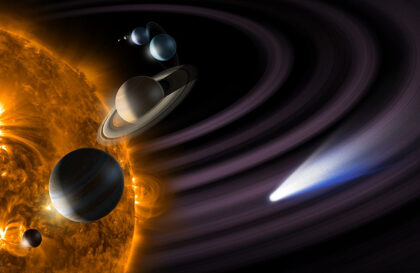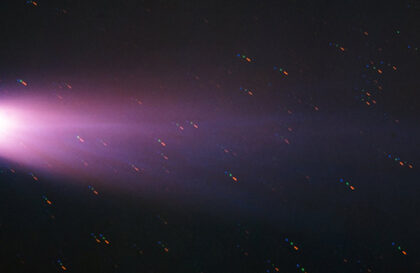Pluto is as dark as a closet with a candle. The basketball hoop can be hung at a height of 45m due to the low gravity. Its relief depends on the time of year. Since 1990, it has been spring, and the mountains have evaporated.
Pluto was once a dwarf planet in the solar system and is now the “king of comets” of the Kuiper belt. It was excluded from the list of planets by the International Astronomical Union IAU on August 24, 2006, because it does not satisfy the third condition of the planetary class. Its mass is only 7% of the mass of all Kuiper belt objects. The Earth’s mass is 1.7 million times greater than that of all other bodies near its orbit. It should be noted that during the years of Pluto’s discovery, it was assumed that it was comparable in size to the Earth.
The surface area of Pluto is 17.7 million km², two times less than the lunar surface and slightly larger than the area of Russia.
Pluto’s orbit has an inclination of 17 degrees to the orbital plane of the Solar System and a strong tilt of its rotation axis of about 120 degrees. He rolls in orbit on his side and upside down. Due to its low mass, Pluto’s orbit is quite chaotic due to its interaction with Neptune.
Pluto’s distance from the Sun varies from 4.437 billion km at perihelion to 7.376 billion km at aphelion (29.7–49.3 AU). It is located 40 times farther from the Sun than the Earth. Pluto would develop a comet-like tail if it were as close to the Sun as Earth. One of the authors of the decline in Pluto’s status considered it “the king of the Kuiper Belt comets.”
The Sun in Pluto’s sky appears as a tiny dot, like a bright star, about 320 times brighter than the Moon at full moon in Earth’s sky (full moon illumination = 0.27 lux). The lighting intensity differs by 2.8 times; in summer, the days will be bright, like moonlit nights, and in winter, like in a closet with a candle.
Pluto receives about 1600 times less light than us, i.e., approximately the same as in a 20 sq.m. room with one 25 W incandescent lamp. In the same room, it will be as bright as day on a very cloudy day on Earth if there are 10 of these 25 W lamps.
Light (like radio waves, for example, a message sent via WhatsApp) travels the distance from the Sun to Pluto in 247 minutes at perihelion (4.4 billion km) and 410 minutes at aphelion (7.4 billion km).
Pluto’s orbital period is 247.92 Earth years.
Credit: NASA
A day on Pluto lasts 6.387 Earth days. It moves backward in relation to the Earth, and then the sunrise can be observed in the west and the sunset in the east—sunrises and sunsets in stunning electric blue.
The change of day and night familiar to us is characteristic only of the equator; the remaining parts of Pluto are under the cover of the polar day or night for 124 Earth years. Moreover, “beyond the Arctic Circle” is most of the planet’s hemisphere, starting from 29.6 degrees northern and southern latitude – on Earth, this is the latitude of Cairo, the capital of Egypt. On Earth, the Arctic Circle passes at a latitude of 66.5 degrees.
The seasons on Pluto are more pronounced than on Earth. This is due to the tilt of the axis. Earth has 23.44 degrees, Pluto has 122 degrees. The duration of one season is approximately 61-62 years.
In summer, the days are almost three times lighter than in winter.
Summer changes the planet’s topography. Under the influence of the Sun, the ice that makes up the mountains evaporates. The temperature rises to – 218 0C. In winter, the temperature drops to -2330C, the ice grows again, and the mountains grow. During the winter, Pluto can become so cold that its atmosphere freezes and falls to the surface as snow, leaving a near-vacuum in the atmosphere. Therefore, there is nothing to “breathe” on Pluto in winter.
The average surface temperature is 50 K (-223.15 0C), and the average in the atmosphere is 400 more (2008 data). At Pluto’s equator, the average annual temperature is about 15 degrees lower than at the poles. The poles are warmer in summer and colder in winter due to the strong tilt of the axis of rotation.
Even in very large telescopes, Pluto is visible as a point, indistinguishable from an ordinary star, since its angular diameter does not exceed 0.11″. Its color is light brown. Trying to see it from Earth with the naked eye is like trying to see a walnut from a distance of 50 km.
The thickness of the ice cover is 100-180 km.
Gravity there is so weak that a basketball hoop would have to be hung at a height of about 45 meters – and you could still jump to it. A person weighing 90 kilograms here would weigh about 5.5 kg since gravity is almost 16 times less than on Earth.
Surface pressure is about 10–5 atm (1 Pa) or approximately 101,000 times less than on Earth. The atmosphere consists of gases evaporating from surface ice. This is nitrogen with an admixture of methane (about 0.25%) and carbon monoxide (about 0.05–0.1%).
Credit: Wikimedia (public source) / Author Lexicon
Since 1990, it has been spring on Pluto.
The mass of Pluto is 5.6 times less than the mass of the Moon and is 0.22% of the mass of the Earth (480 times less than the mass of the Earth).
Opening date: February 18, 1930. Clyde William Tombaugh discovered the planet.
Banner image: The big planet is Pluto, seen from one of the newly discovered moons. To the right of Pluto is the large moon Charon and to the left is the second new moon as a small bright dot. Credit: ESA
Image credit:
https://www.esa.int
https://www.pinterest.com
https://commons.wikimedia.org
